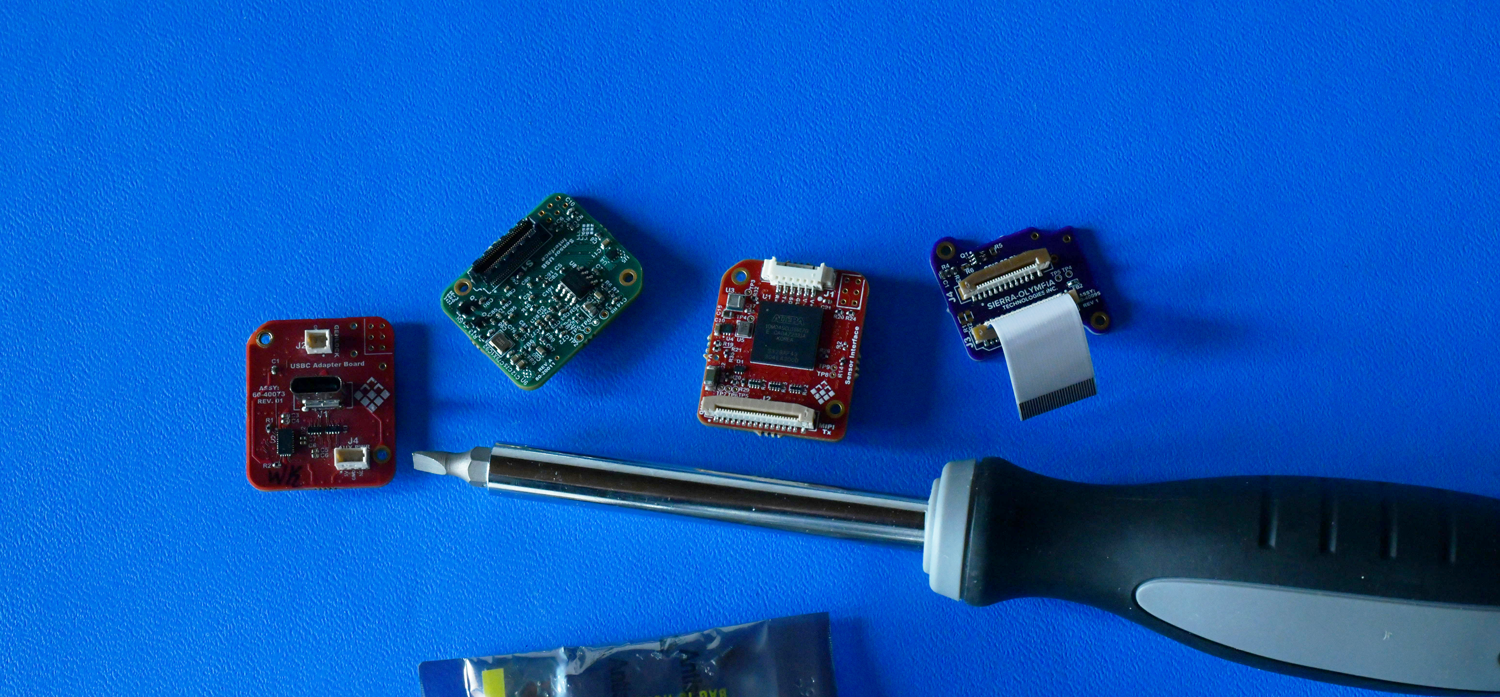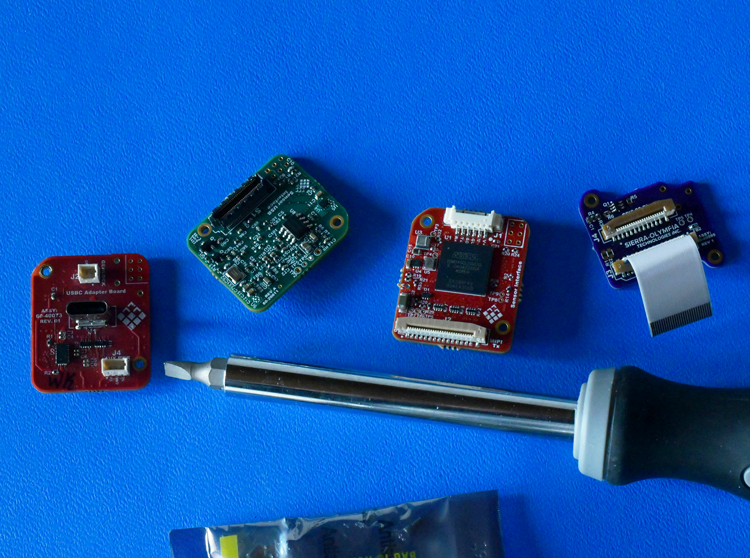Understanding Infrared Camera Interfaces
Infrared cameras are powerful tools for a wide range of applications, from airborne and marine surveillance to fixed installations for industrial monitoring. However, integrating them effectively into a system requires a solid understanding of their digital interfaces. In this blog, we’ll explore the various connectivity options available for Sierra-Olympia’s Tenum 640, Tenum 1280, Viento 10, and Viento HD10 infrared cameras, breaking them down for engineers who need to extract video and data seamlessly into their applications.
Tenum 640 and Tenum 1280: Base and Feature Board Configurations
The Tenum 640 and Tenum 1280 are longwave infrared (LWIR) microbolometer sensors with a 10-micron pixel pitch. For this discussion, we’ll use the Tenum 640 as our example, but all interfaces and configurations apply equally to the Tenum 1280, which offers a higher resolution at 1280 x 1024 pixels.
Base Configuration
The Tenum 640 can be purchased as a bare sensor, known as the base configuration. It features a 60-pin high-density board-to-board connector, which supports multiple interface options:
- LVDS (Low Voltage Differential Signaling)
- Camera Link, an industry-standard interface
- Single-ended parallel CMOS output, including clocks and sync signals
This configuration is ideal for integrators looking for direct, low-level sensor access.

Base + Feature Board Configuration
Adding the Feature Board to the Tenum 640 results in the Base + Feature Board Configuration. This setup provides a 30-pin cable-type connector, which offers more flexibility for connection while reducing density constraints. This is an easier-to-integrate option for engineers who prefer cable-based interfacing.
The Viento 10 Product Line: Expanding Connectivity
Once a Tenum sensor is integrated with a backend processing board, it becomes the Viento 10 product. Viento, meaning wind, refers to the camera family, while “10” signifies its 10-micron pixel pitch. These expanded configurations provide a range of plug-and-play options suitable for different system requirements.
1. Viento 10 USB
The Viento 10 USB integrates a USB board set featuring a USB-C connector for easy connectivity. This is a plug-and-play option requiring minimal setup, as most modern operating systems (Windows, Linux) automatically recognize the device via the UVC (USB Video Class) driver. This makes it an excellent choice for quick deployment and testing.
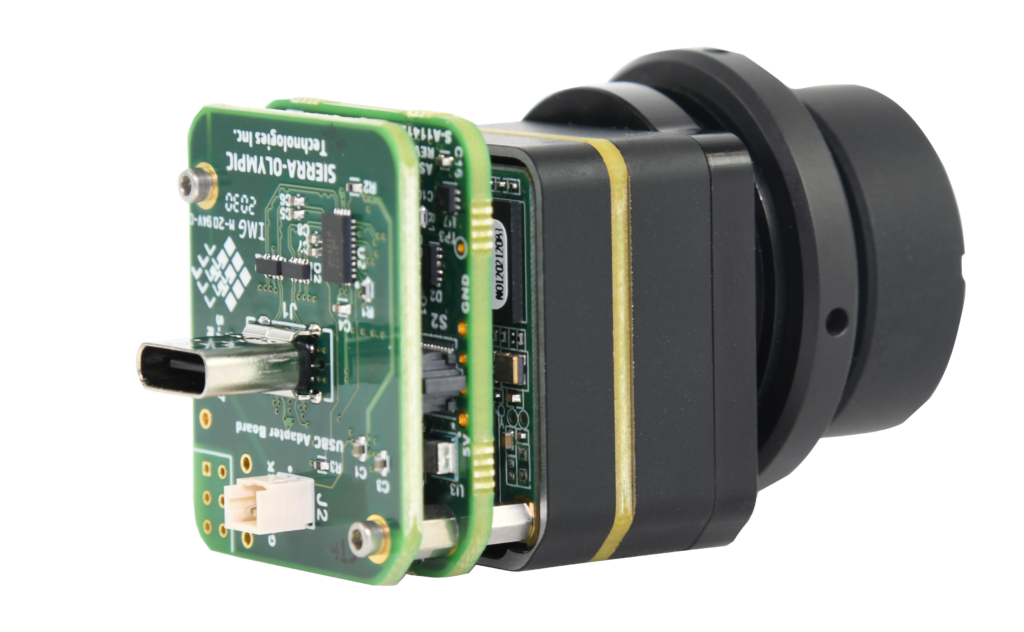
2. Viento 10 GigE (Gigabit Ethernet)
For networked applications, the Viento 10 GigE provides a Gigabit Ethernet (GigE) interface. It uses a standard Cat6 Ethernet cable, available off-the-shelf, and supports Power over Ethernet (PoE). This means the same Ethernet cable supplies both power and data, reducing cabling complexity and making it ideal for remote installations.
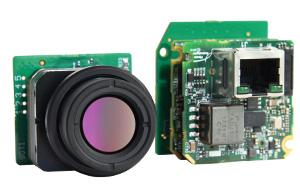
3. Viento 10 SDI (Serial Digital Interface)
The Viento 10 SDI outputs video using SDI, a standard used in professional broadcasting. Unlike analog video outputs, SDI provides a high-quality, lossless digital video stream. Engineers can connect it using an HD BNC cable to an SDI-compatible monitor for real-time viewing with minimal latency.
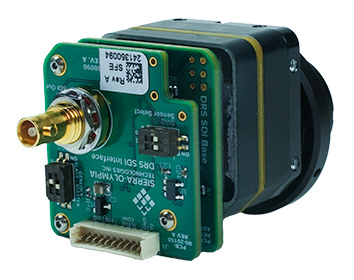
4. Viento 10 MIPI (Mobile Industry Processor Interface)
The Viento 10 MIPI interface is optimized for embedded applications, leveraging the NVIDIA Jetson Orin Nano processor. Sierra-Olympia provides a developer kit with preconfigured drivers, making integration as close to plug-and-play as possible. This is particularly valuable for AI-driven processing applications, such as real-time object detection and thermal analysis.
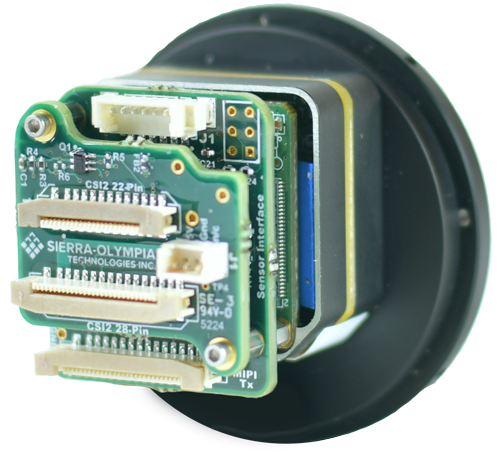
Scalability Across the Tenum Product Line
Each of the interfaces discussed applies equally to the Tenum 1280 as it does to the Tenum 640. Engineers can choose the best connection method depending on the specific requirements of their application—whether it’s for high-speed data transmission, remote monitoring, or embedded AI processing.
Application Considerations
Sierra-Olympia customers have integrated Tenum 640 and 1280 sensors into a diverse range of applications, including:
- Airborne surveillance systems
- Marine and ground-based thermal imaging
- Fixed installations for industrial and environmental monitoring
- Mobile platforms, including UAVs and autonomous vehicles
When selecting an interface, the most critical question is: How will you get the data out of the sensor and into your system? By understanding these options, engineers can ensure seamless integration into their specific use cases.
Final Thoughts
Infrared imaging applications demand reliable and flexible connectivity solutions. Whether you need direct sensor access (LVDS, Camera Link, CMOS), plug-and-play ease (USB, SDI), networked control (GigE), or embedded integration (MIPI), Sierra-Olympia’s Tenum and Viento product lines offer a scalable range of solutions.

